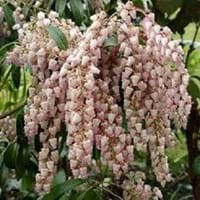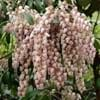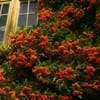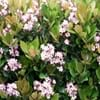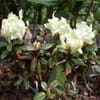Life Span
Perennial
Perennial
Type
Broadleaf Evergreen
Fruit
Origin
Eastern Asia
Caribbean, South America
Types
Mountain Fire , Variegata , Purity , Red Mill
Pinks Mammoth, African Pride, Late Gold, Geffner, Hilary White
Habitat
Lowland evergreen rainforest, Shaded sites
Warm and moist climatic conditions
USDA Hardiness Zone
5-9
10-13
AHS Heat Zone
Not Available
12-9
Sunset Zone
21,22
Not Available
Habit
Upright/Erect
Upright/Erect
Flower Color
White, Red, Light Pink, Hot Pink
Yellow green
Flower Color Modifier
Bicolor
Bicolor
Fruit Color
Tan
Light Green, Sea Green
Leaf Color in Spring
Red, Green, Dark Green, Pink, Bronze
Light Green
Leaf Color in Summer
Green, Dark Green
Light Green
Leaf Color in Fall
Green, Dark Green
Light Green
Leaf Color in Winter
Green, Dark Green
Light Green
Leaf Shape
Lanceolate to elliptical
oblong or narrow-lanceolate
Plant Season
Spring, Summer, Fall, Winter
Summer
Sunlight
Full Sun, Partial Sun, Partial shade
Full Sun, Partial Sun
Type of Soil
Loam
Loam, Sand
The pH of Soil
Acidic
Acidic, Neutral, Alkaline
Soil Drainage
Well drained
Well drained
Bloom Time
Early Spring, Late Winter
Early Summer, Summer
Tolerances
Deer resistant, Light Frost
Drought
Where to Plant?
Ground
Container
How to Plant?
stem tip cuttings
Seedlings
Plant Maintenance
Medium
Medium
Watering Requirements
Keep the Soil well drained, Requires consistently moist soil
Do Not over Water, Does not require regular watering
In Summer
Lots of watering
Lots of watering
In Spring
Moderate
Moderate
In Winter
Average Water
Average Water
Soil pH
Acidic
Acidic, Neutral, Alkaline
Soil Type
Loam
Loam, Sand
Soil Drainage Capacity
Well drained
Well drained
Sun Exposure
Full Sun, Partial Sun, Partial shade
Full Sun, Partial Sun
Pruning
Prune after flowering, Remove damaged leaves, Remove dead branches, Remove dead leaves
Prune young trees into an open vase shape
Fertilizers
All-Purpose Liquid Fertilizer, fertilize in spring, fertilize in winter
Nitrogen
Pests and Diseases
dieback, Leaf spot, Mites, Soft scales
Anthracnose, Diplodia rot, Leaf spot
Plant Tolerance
Deer resistant, Light Frost
Drought
Flowers
Showy
Insignificant
Flower Petal Number
Single
Single
Foliage Texture
Medium
Medium
Foliage Sheen
Glossy
Matte
Attracts
Birds, Butterflies, Hummingbirds, Moths
Fruit Bats
Allergy
Not Available
Oral Allergy
Aesthetic Uses
Beautification, Cottage Garden, Ornamental use, Showy Purposes, Wild gardens
Not Used For Aesthetic Purpose
Beauty Benefits
Not Available
Promotes Healthy Hair, Promotes healthy skin
Environmental Uses
Air purification
Air purification
Medicinal Uses
No Medicinal Use
Diabetes, Diarrhea
Part of Plant Used
Not Applicable
Bark, Fruits, Seeds
Other Uses
Not Available
Used to make hair tonic, Used to promote healthy blood flow during menstruation
Used As Indoor Plant
No
No
Used As Outdoor Plant
Yes
Yes
Garden Design
Feature Plant, Foundation, Hedges, Mixed Border, Screening, Wind Break, Topiary, Bonsai, Espalier
Fruit / Fruit Tree, Shade Trees, Tropical
Botanical Name
PIERIS japonica
ANNONA squamosa
Common Name
Japanese Andromeda
Sugar Apple
In Hindi
Japanese pieris
सीताफल
In German
Japanese pieris
Zuckerapfel
In French
Japanese pieris
Sugar Apple
In Spanish
Japanese pieris
Manzana de azúcar
In Greek
Japanese pieris
ζάχαρη της Apple
In Portuguese
Japanese pieris
Pinha
In Polish
Japanese pieris
Cukier Jabłko
In Latin
Japanese pieris
Sugar Apple
Phylum
Magnoliophyta
Magnoliophyta
Class
Magnoliopsida
Magnoliopsida
Order
Ericales
Magnoliales
Family
Ericaceae
Annonaceae
Clade
Angiosperms, Asterids, Eudicots
Angiosperms, Magnoliids
Subfamily
Vaccinioideae
Maloideae
Number of Species
Not Available
Not Available
Season and Care of Japanese Pieris and Sugar Apple
Season and care of Japanese Pieris and Sugar Apple is important to know. While considering everything about Japanese Pieris and Sugar Apple Care, growing season is an essential factor. Japanese Pieris season is Spring, Summer, Fall and Winter and Sugar Apple season is Spring, Summer, Fall and Winter. The type of soil for Japanese Pieris is Loam and for Sugar Apple is Loam, Sand while the PH of soil for Japanese Pieris is Acidic and for Sugar Apple is Acidic, Neutral, Alkaline.
Japanese Pieris and Sugar Apple Physical Information
Japanese Pieris and Sugar Apple physical information is very important for comparison. Japanese Pieris height is 30.00 cm and width 30.00 cm whereas Sugar Apple height is 460.00 cm and width 610.00 cm. The color specification of Japanese Pieris and Sugar Apple are as follows:
Japanese Pieris flower color: White, Red, Light Pink and Hot Pink
Japanese Pieris leaf color: Red, Green, Dark Green, Pink and Bronze
Sugar Apple flower color: Yellow green
- Sugar Apple leaf color: Light Green
Care of Japanese Pieris and Sugar Apple
Care of Japanese Pieris and Sugar Apple include pruning, fertilizers, watering etc. Japanese Pieris pruning is done Prune after flowering, Remove damaged leaves, Remove dead branches and Remove dead leaves and Sugar Apple pruning is done Prune young trees into an open vase shape. In summer Japanese Pieris needs Lots of watering and in winter, it needs Average Water. Whereas, in summer Sugar Apple needs Lots of watering and in winter, it needs Average Water.
